Systems of Support
Annual Exhibition
16 Dec 2023 - 04 Feb 2024

Exhibition view Systems of Support. Annual Exhibition 2023, Salzburger Kunstverein 2023. Photo: kunst-dokumentation
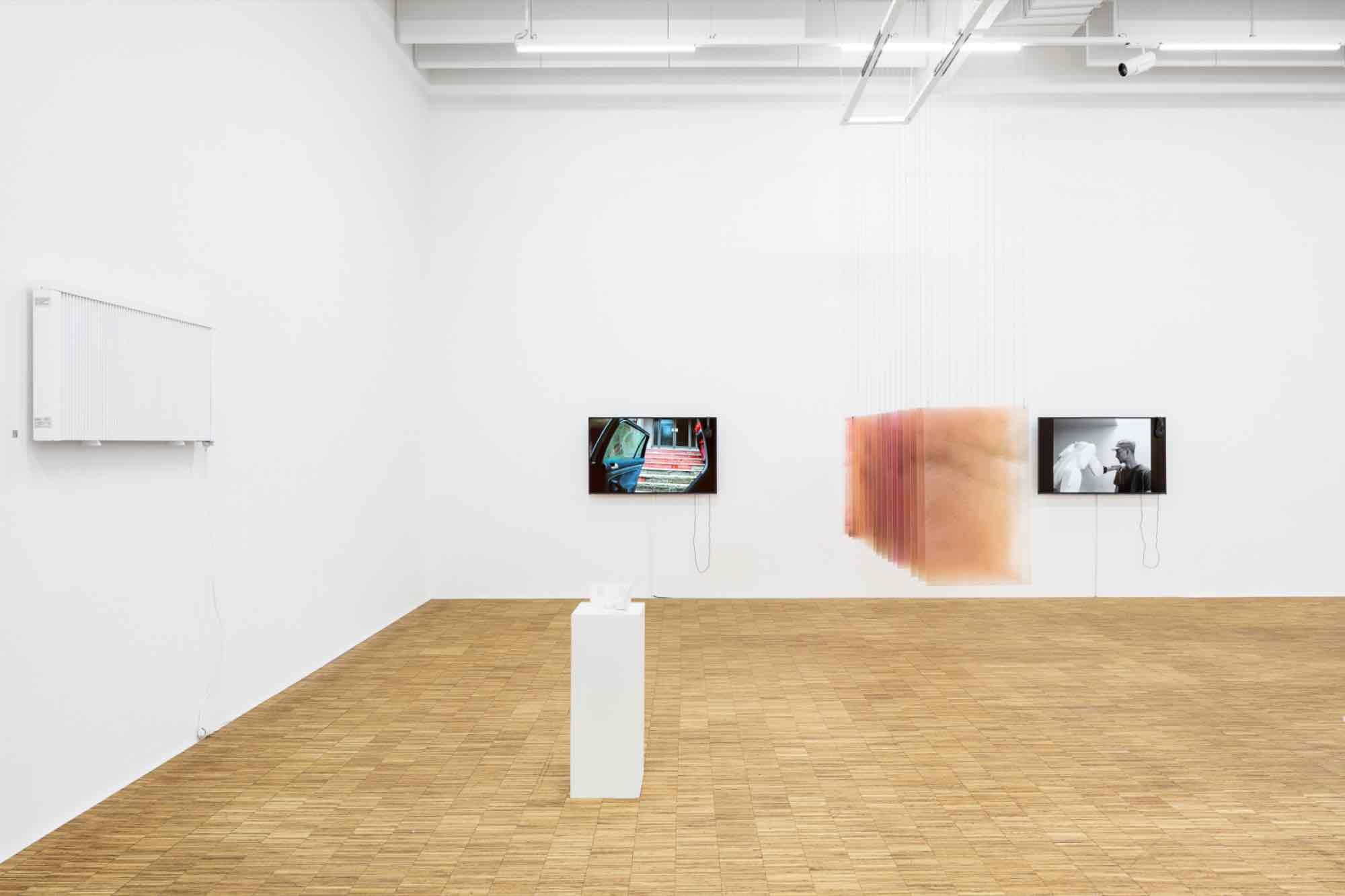
Exhibition view Systems of Support. Annual Exhibition 2023, Salzburger Kunstverein 2023. Photo: kunst-dokumentation

Exhibition view Systems of Support. Annual Exhibition 2023, Salzburger Kunstverein 2023. Photo: kunst-dokumentation
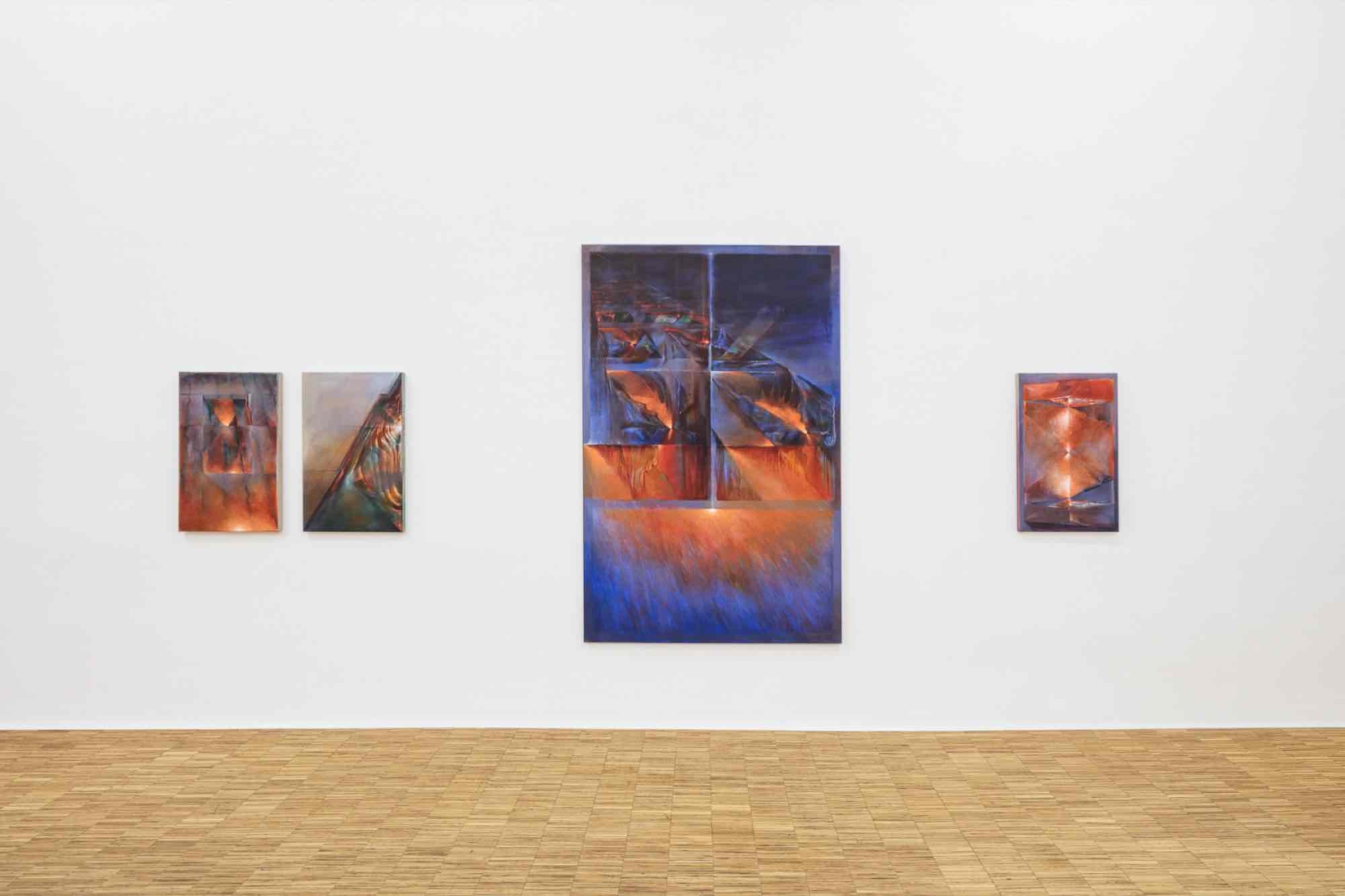
F.l.t.r.: Vika Prokopaviciute, Open, Above, 2023, courtesy of the artist. Open, Under, 2023, courtesy of the artist. Boiling Ultra, 2023, courtesy of the artist and house of spouse Gallery. Open, Away, 2023, courtesy of the artist. Exhibition view Systems of Support. Annual Exhibition 2023, Salzburger Kunstverein 2023. Photo: kunst-dokumentation

Left: Christine Lederer, Speak Up, 2023, performative act, courtesy of the artist. Right: Claudia Lomoschitz, Health Investment, 2022, courtesy of the artist. Front: Vanessa Schmidt, Beds, Scenes, and Notes, 2022, courtesy of the artist. Exhibition view Systems of Support. Annual Exhibition 2023, Salzburger Kunstverein 2023. Photo: kunst-dokumentation
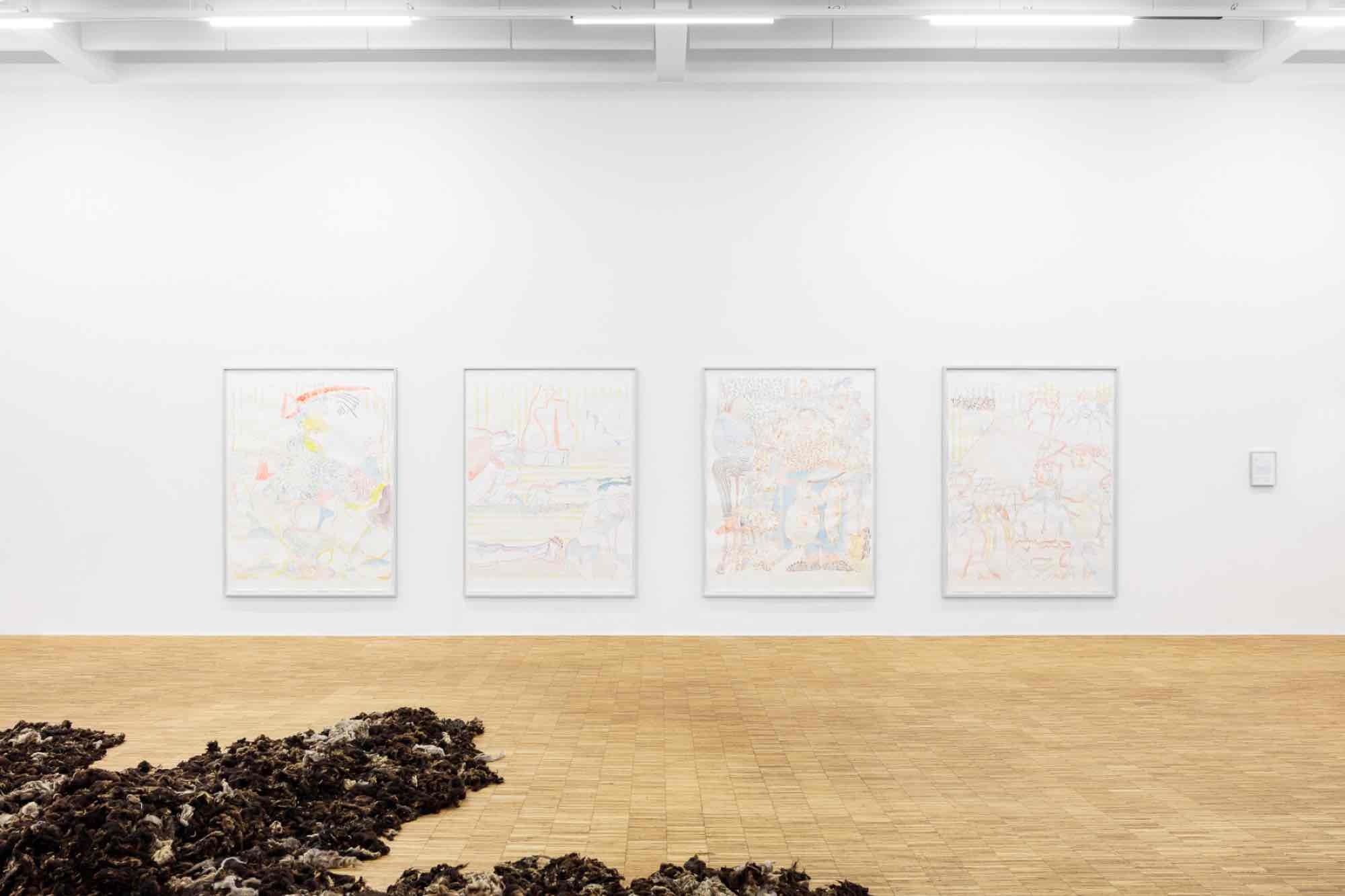
F.l.t.r.: Anna Schachinger, Der Ananasaufguss, 2019, courtesy of Sophie Tappeiner. Liegende, 2019, courtesy of Sophie Tappeiner. Büglerin (mit Ablenkung), 2017, courtesy of Sophie Tappeiner. Wacheltuch, 2019, courtesy of Sophie Tappeiner. Exhibition view Systems of Support. Annual Exhibition 2023, Salzburger Kunstverein 2023. Photo: kunst-dokumentation
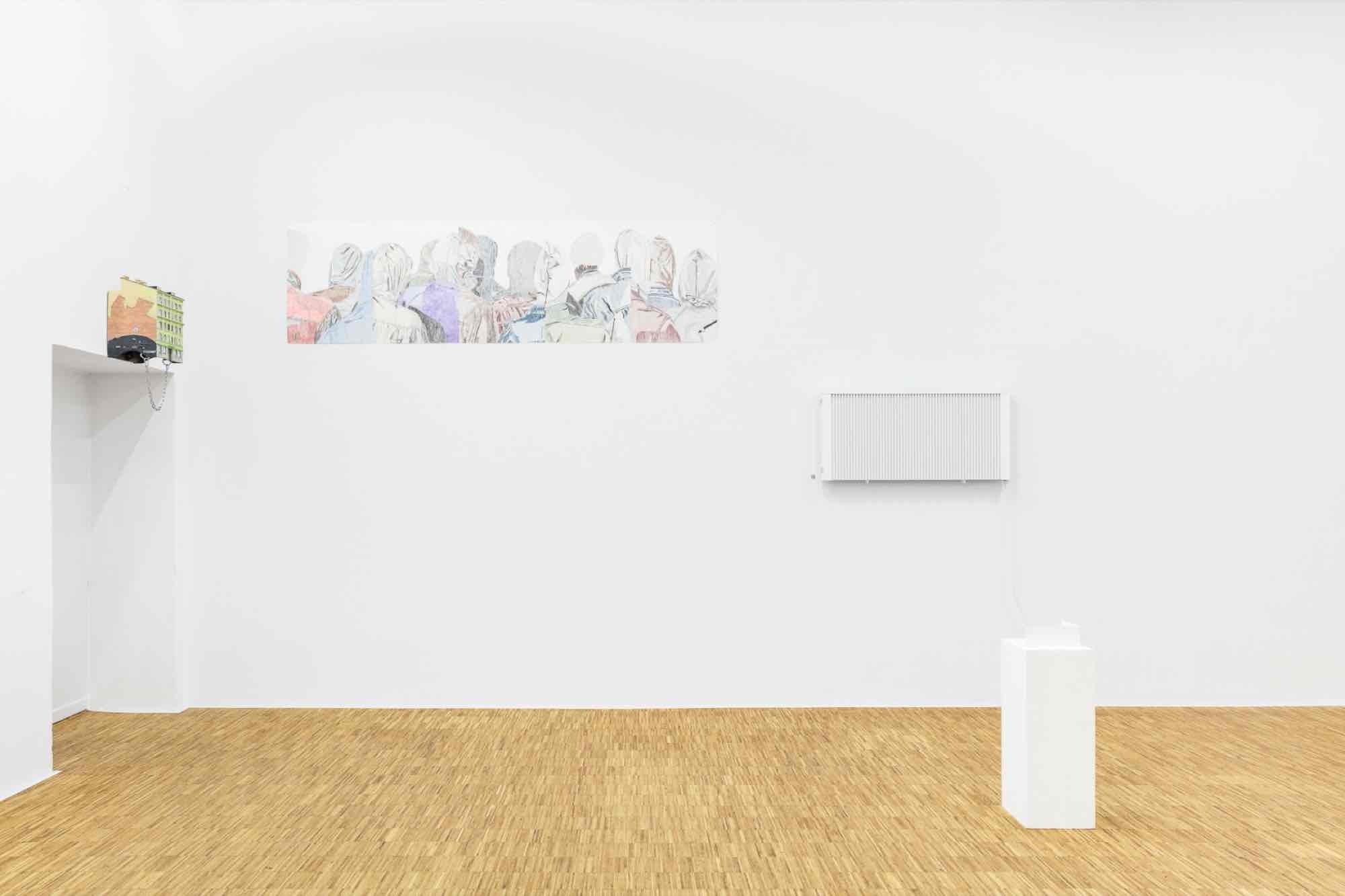
F.l.t.r.: Nicholas Hoffman, Rebhahngasse 33, 2022 – ongoing, courtesy of the artist. Bartholomaeus Wächter, Crowds (2), 2023; Crowds (1), 2023; Crowds (4), 2023; Crowds (3), 2023; Crowds (5), 2023, all works Courtesy of the artist. Miriam Stoney, Deconstitution (Hitzenroth), 2023, courtesy of the artist. Front: Alina Panasenko, Outside the Quadrangle, 2023, courtesy of the artist. Exhibition view Systems of Support. Annual Exhibition 2023, Salzburger Kunstverein 2023. Photo: kunst-dokumentation
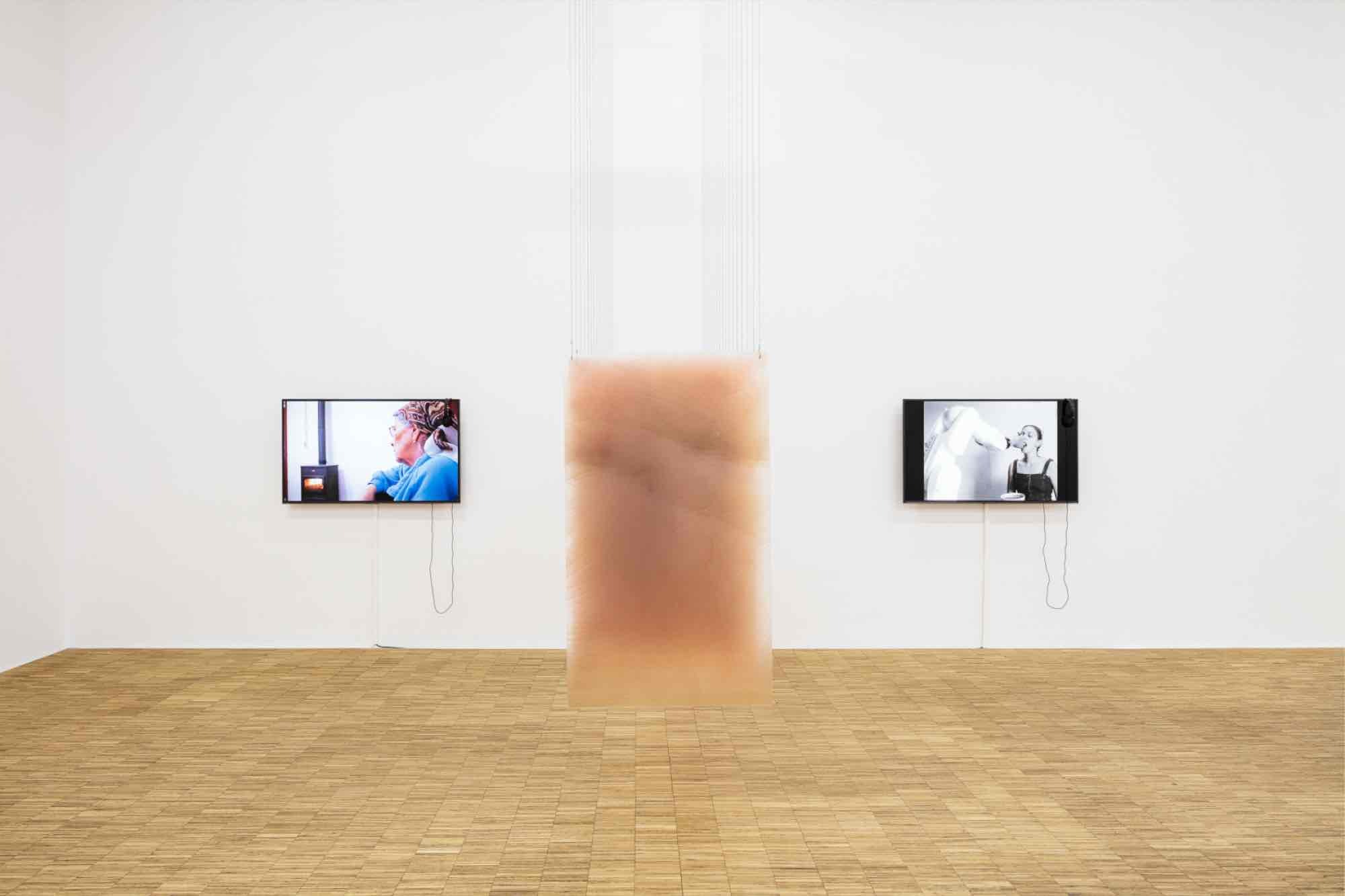
V.l.n.r.: Đejmi Hadrović, NENA, 2021, courtesy of the artist. EXTRA stark, EXTRA stark, 2023, courtesy of the artists. Manuel Tozzi, Studies in Motion, 2023, courtesy of the artist. Exhibition view Systems of Support. Annual Exhibition 2023, Salzburger Kunstverein 2023. Photo: kunst-dokumentation

Alina Panasenko, Outside the Quadrangle, 2023, courtesy of the artist. Exhibition view Systems of Support. Annual Exhibition 2023, Salzburger Kunstverein 2023. Photo: kunst-dokumentation

Caroline Vitzthum, Wet [scape], 2023, water and raw sheep wool from Bioarche Rocherbauer, courtesy of the artist. Performance Wet[scape] by Caroline Vitzthum, performed by Lenz Farkas & Maite Dárdano (16.12.2023). Exhibition view Systems of Support. Annual Exhibition 2023, Salzburger Kunstverein 2023. Photo: kunst-dokumentation
The exhibition Systems of Support aims to explore interdependence. This interdependence is not limited to human-to-human interactions but extends to our relationships with the broader environment—including non-human actors, natural resources, and constructed infrastructures. The exhibition seeks to foster a discourse on social connectivity as the nexus of shared resources and collective ethics. How does art support us? And in turn, how do we support art?
Systems of Support urges us to consider not only the tangible support structures—such as funding and institutional backing—but also the intangible ones, like inspiration, knowledge sharing, and emotional sustenance. Art as a system in itself is not isolated but deeply rooted in its environment, reflecting and interacting with the dynamics of the world it inhabits. It can serve as a mirror, reflecting the state of our current environment, or as a window, offering visions of alternative futures. It can also function as a bridge, connecting disparate ideas and fostering a network of solidarity. It can foster understanding by humanizing statistics and abstract concepts, last but not least art can also evoke empathy in ways that mere words often cannot. The artworks and activities within this systemic perspective are thus not merely objects of aesthetic contemplation but catalysts an epistemic transformation.
The exhibition’s self-reflective stance—questioning its role as a site of support for artists—opens up dialogues about the nature of support in the world at large. It prompts us to not only examine the relationships between artists, institutions, audiences, and the wider community, but also challenges us to think about sustainability in terms of maintaining and nurturing the creative ecosystem that allows art and culture to flourish. In the shadow of global crises, art emerges as a space of resilience and reflection.
In practical terms, support through art can be collaborative projects fostering dialogue and understanding. It can be community art projects that involve local populations in the creation process, giving them agency and a sense of ownership over their narratives. It can also be public art initiatives that transform shared spaces to reflect communal hopes and struggles. The notion of the system, while carrying connotations of hegemony, is reimagined here to highlight the existence of pluralistic support networks, urging an ecological perspective on the world at large.
Among these networks is Blumenblock (flower brigade), which seeks to articulate a language of artistic protest within a local system that operates outside a success-oriented, commercialized art world. Their first action involved creating paper flowers to form a “Flower Block” during a global climate strike. The collective, rooted in Salzburg, meets weekly to explore artistic forms of protest, positioning itself not as a symbol for a movement but as an art movement itself.
The interplay of feminist solidarity and networks as support structures is further explored in the drawings of Anna Schachinger. Schachinger’s works, such as “Wacheltuch” and “The Pineapple Infusion,” delve into the concept of spaces of solidarity and public intimacy. Her detailed depictions of multi-communal sauna gatherings serve as a metaphor for collective experience and shared histories, aligning with the exhibition’s exploration of communal support structures. Schachinger’s work “Ironer (with Distraction)” from 2017 embodies repetitive care work. It shows a female figure, overwhelmed by a mountain of crumpled fabrics that she is ironing. Through the central depiction of this activity and an observer in the picture, her Sisyphean task is elevated to a heroic deed.
The exhibition also hosts another feminist artists’ network EXTRA stark. Depicting the palm prints of all network members, the work stands as an abstract visualization of networking and solidarity gestures. This network, comprising artists who share time and space for joint work and thinking, addresses societal blind spots and irritations within a patriarchally shaped society.
In this vein, Luca Büchler’s ongoing series, consisting of key duplicates from exhibiting institutions paired with corresponding donation contracts, challenges notions of space—how it is defined, experienced, and occupied. Büchler’s work, deeply concerned with accessibility, particularly for queer individuals, embodies the exhibition's spirit by contemplating the interdependence between institutions and artists.
Nicholas Hoffman’s “Rebhahngasse 33” is a testament to the transient nature of spaces and memories. Recreating a demolished building from memory and turning it into a wearable mask, Hoffman’s piece explores the idea of buildings as living entities with stories and souls, echoing the exhibition’s emphasis on the interplay between physical spaces and human experiences.
Maja Spasova’s work “Merci” appears in various corners of the Ring Galerie. Spasova creates drawings that depict hands holding texts that convey both pleas and gratitude for support in different languages. Rather than traditional fine art, these drawings resemble minimalist graffiti.
Alina Panasenko’s “Outside the Quadrangle” uses photography and 3D printing to explore the concept of personal space in the context of forced displacement due to war. Her work, examining the blurred boundaries of personal space in times of crisis, aligns with the exhibition's theme of art reflecting and responding to the world’s shifting dynamics.
In Đejmi Hadrović’s film essay, “NENA,” we are confronted with the personal story of Nena. Through the lens of a woman who has witnessed the atrocities of the World War II and the Yugoslav wars, Hadrović weaves a narrative that questions the labor and capital structures of a society shattered by conflict. Her work epitomizes the exhibition’s focus on art as a medium for understanding and empathizing with complex socio-political realities.
Vika Prokopaviciute’s series of paintings, including “Boiling Ultra” and “Open,” challenges the viewer’s perception with its fluid and dynamic compositions. Her work, questioning established perspectives and encouraging contemplation, mirrors the exhibition’s focus on art as a medium for exploring and understanding diverse viewpoints.
Julia Haugeneder’s installation, “The Rudiment on the Dissection Table,” is a striking commentary on the transient nature of physical objects and their symbolic meanings. The work, consisting of a rotating dissection table with an object made of glue and pigment, reflects on the impermanence and the continuous transformation of objects and ideas, resonating with the exhibition's theme of art as a dynamic and evolving system.
Vanessa Schmidt’s “Beds, Scenes, and Notes” offers a narrative exploration of domestic rituals and storytelling. Her sculptural work, creating metaphorical spaces of care and liberation, resonates with the exhibition’s theme of art as a nurturing and transformative force.
Andrea Zabric’s ongoing project “tuta” presents two artist suits that embody the intersections of art and functionality. Zabric’s approach to the artist’s attire as a medium reflects on the practical and symbolic aspects of artmaking, suggesting a deeper exploration of the role of the artist in society and the various elements that support and influence their work.
Miriam Stoney’s “Deconstitution (Hitzenroth)” provocatively uses a radiator and an online listing to critique the commodification of artists’ struggles. This work exemplifies the exhibition’s focus on the challenges and dynamics of artistic production and the value of support within the creative community.
Robin Waart’s “To Véra” uses mirror vinyl on mirrors throughout the exhibition space, reflecting on the often-unseen labor and dedication behind artistic creation. This installation brings into focus the exhibition’s theme of recognizing and valuing the various forms of support that underpin the art world.
Claudia Lomoschitz’s video piece, “Health Investment,” explores the historical significance of the Semmelweis Clinic, a pioneering institution in women’s health. The work delves into the clinic’s transformation over time, highlighting the precarious balance between public health and private interests, and resonating with the exhibition’s exploration of the dynamic between different support structures.
Manuel Tozzi’s “Studies in Motion” is an intriguing exploration of the interaction between humans and robots. This series of video recordings questions the nature of collaboration and care, reflecting the exhibition's theme of the evolving nature of support systems.
Caroline Vitzthum’s “Wet [scape]” is an immersive installation focusing on the ecological importance of peatlands. Using water and raw sheep wool, Vitzthum creates a space that emphasizes the need for environmental conservation, aligning with the exhibition’s broader theme of art’s role in ecological awareness and support.
Bartholomaeus Wächter’s “Crowds” series, using colored pencil on paper, portrays the anonymity and loneliness within crowds. This work echoes the exhibition's exploration of collective experiences and the individual’s place within them.
Last, but not least Christine Lederer’s “Reiss dein Mauf auf” is a performative work that utilizes ash and wall paint to create a powerful visual and textual narrative. This work underscores the importance of voice and solidarity in confronting societal norms and is a poignant reminder of the role of art in fostering societal change and awareness.
Each artist and collective participating in Systems of Support contributes to a shared discourse on solidarity and the commons—a value system that remains open and fosters counter-hegemonic relations. This exhibition is also a modest reminder that in the face of global crises, the most revolutionary art can be one of support, solidarity, and mutual understanding.
– Mirela Baciak
Artists: Blumenblock (flower brigade), Luca Büchler, EXTRA stark, Đejmi Hadrović, Julia Haugeneder, Nicholas Hoffman, Christine Lederer, Claudia Lomoschitz, Alina Panasenko, Vika Prokopaviciute, Anna Schachinger, Vanessa Schmidt, Maja Spasova, Miriam Stoney, Manuel Tozzi, Caroline Vitzthum, Robin Waart, Bartholomaeus Wächter, Andrea Zabric
Curator: Mirela Baciak
Systems of Support urges us to consider not only the tangible support structures—such as funding and institutional backing—but also the intangible ones, like inspiration, knowledge sharing, and emotional sustenance. Art as a system in itself is not isolated but deeply rooted in its environment, reflecting and interacting with the dynamics of the world it inhabits. It can serve as a mirror, reflecting the state of our current environment, or as a window, offering visions of alternative futures. It can also function as a bridge, connecting disparate ideas and fostering a network of solidarity. It can foster understanding by humanizing statistics and abstract concepts, last but not least art can also evoke empathy in ways that mere words often cannot. The artworks and activities within this systemic perspective are thus not merely objects of aesthetic contemplation but catalysts an epistemic transformation.
The exhibition’s self-reflective stance—questioning its role as a site of support for artists—opens up dialogues about the nature of support in the world at large. It prompts us to not only examine the relationships between artists, institutions, audiences, and the wider community, but also challenges us to think about sustainability in terms of maintaining and nurturing the creative ecosystem that allows art and culture to flourish. In the shadow of global crises, art emerges as a space of resilience and reflection.
In practical terms, support through art can be collaborative projects fostering dialogue and understanding. It can be community art projects that involve local populations in the creation process, giving them agency and a sense of ownership over their narratives. It can also be public art initiatives that transform shared spaces to reflect communal hopes and struggles. The notion of the system, while carrying connotations of hegemony, is reimagined here to highlight the existence of pluralistic support networks, urging an ecological perspective on the world at large.
Among these networks is Blumenblock (flower brigade), which seeks to articulate a language of artistic protest within a local system that operates outside a success-oriented, commercialized art world. Their first action involved creating paper flowers to form a “Flower Block” during a global climate strike. The collective, rooted in Salzburg, meets weekly to explore artistic forms of protest, positioning itself not as a symbol for a movement but as an art movement itself.
The interplay of feminist solidarity and networks as support structures is further explored in the drawings of Anna Schachinger. Schachinger’s works, such as “Wacheltuch” and “The Pineapple Infusion,” delve into the concept of spaces of solidarity and public intimacy. Her detailed depictions of multi-communal sauna gatherings serve as a metaphor for collective experience and shared histories, aligning with the exhibition’s exploration of communal support structures. Schachinger’s work “Ironer (with Distraction)” from 2017 embodies repetitive care work. It shows a female figure, overwhelmed by a mountain of crumpled fabrics that she is ironing. Through the central depiction of this activity and an observer in the picture, her Sisyphean task is elevated to a heroic deed.
The exhibition also hosts another feminist artists’ network EXTRA stark. Depicting the palm prints of all network members, the work stands as an abstract visualization of networking and solidarity gestures. This network, comprising artists who share time and space for joint work and thinking, addresses societal blind spots and irritations within a patriarchally shaped society.
In this vein, Luca Büchler’s ongoing series, consisting of key duplicates from exhibiting institutions paired with corresponding donation contracts, challenges notions of space—how it is defined, experienced, and occupied. Büchler’s work, deeply concerned with accessibility, particularly for queer individuals, embodies the exhibition's spirit by contemplating the interdependence between institutions and artists.
Nicholas Hoffman’s “Rebhahngasse 33” is a testament to the transient nature of spaces and memories. Recreating a demolished building from memory and turning it into a wearable mask, Hoffman’s piece explores the idea of buildings as living entities with stories and souls, echoing the exhibition’s emphasis on the interplay between physical spaces and human experiences.
Maja Spasova’s work “Merci” appears in various corners of the Ring Galerie. Spasova creates drawings that depict hands holding texts that convey both pleas and gratitude for support in different languages. Rather than traditional fine art, these drawings resemble minimalist graffiti.
Alina Panasenko’s “Outside the Quadrangle” uses photography and 3D printing to explore the concept of personal space in the context of forced displacement due to war. Her work, examining the blurred boundaries of personal space in times of crisis, aligns with the exhibition's theme of art reflecting and responding to the world’s shifting dynamics.
In Đejmi Hadrović’s film essay, “NENA,” we are confronted with the personal story of Nena. Through the lens of a woman who has witnessed the atrocities of the World War II and the Yugoslav wars, Hadrović weaves a narrative that questions the labor and capital structures of a society shattered by conflict. Her work epitomizes the exhibition’s focus on art as a medium for understanding and empathizing with complex socio-political realities.
Vika Prokopaviciute’s series of paintings, including “Boiling Ultra” and “Open,” challenges the viewer’s perception with its fluid and dynamic compositions. Her work, questioning established perspectives and encouraging contemplation, mirrors the exhibition’s focus on art as a medium for exploring and understanding diverse viewpoints.
Julia Haugeneder’s installation, “The Rudiment on the Dissection Table,” is a striking commentary on the transient nature of physical objects and their symbolic meanings. The work, consisting of a rotating dissection table with an object made of glue and pigment, reflects on the impermanence and the continuous transformation of objects and ideas, resonating with the exhibition's theme of art as a dynamic and evolving system.
Vanessa Schmidt’s “Beds, Scenes, and Notes” offers a narrative exploration of domestic rituals and storytelling. Her sculptural work, creating metaphorical spaces of care and liberation, resonates with the exhibition’s theme of art as a nurturing and transformative force.
Andrea Zabric’s ongoing project “tuta” presents two artist suits that embody the intersections of art and functionality. Zabric’s approach to the artist’s attire as a medium reflects on the practical and symbolic aspects of artmaking, suggesting a deeper exploration of the role of the artist in society and the various elements that support and influence their work.
Miriam Stoney’s “Deconstitution (Hitzenroth)” provocatively uses a radiator and an online listing to critique the commodification of artists’ struggles. This work exemplifies the exhibition’s focus on the challenges and dynamics of artistic production and the value of support within the creative community.
Robin Waart’s “To Véra” uses mirror vinyl on mirrors throughout the exhibition space, reflecting on the often-unseen labor and dedication behind artistic creation. This installation brings into focus the exhibition’s theme of recognizing and valuing the various forms of support that underpin the art world.
Claudia Lomoschitz’s video piece, “Health Investment,” explores the historical significance of the Semmelweis Clinic, a pioneering institution in women’s health. The work delves into the clinic’s transformation over time, highlighting the precarious balance between public health and private interests, and resonating with the exhibition’s exploration of the dynamic between different support structures.
Manuel Tozzi’s “Studies in Motion” is an intriguing exploration of the interaction between humans and robots. This series of video recordings questions the nature of collaboration and care, reflecting the exhibition's theme of the evolving nature of support systems.
Caroline Vitzthum’s “Wet [scape]” is an immersive installation focusing on the ecological importance of peatlands. Using water and raw sheep wool, Vitzthum creates a space that emphasizes the need for environmental conservation, aligning with the exhibition’s broader theme of art’s role in ecological awareness and support.
Bartholomaeus Wächter’s “Crowds” series, using colored pencil on paper, portrays the anonymity and loneliness within crowds. This work echoes the exhibition's exploration of collective experiences and the individual’s place within them.
Last, but not least Christine Lederer’s “Reiss dein Mauf auf” is a performative work that utilizes ash and wall paint to create a powerful visual and textual narrative. This work underscores the importance of voice and solidarity in confronting societal norms and is a poignant reminder of the role of art in fostering societal change and awareness.
Each artist and collective participating in Systems of Support contributes to a shared discourse on solidarity and the commons—a value system that remains open and fosters counter-hegemonic relations. This exhibition is also a modest reminder that in the face of global crises, the most revolutionary art can be one of support, solidarity, and mutual understanding.
– Mirela Baciak
Artists: Blumenblock (flower brigade), Luca Büchler, EXTRA stark, Đejmi Hadrović, Julia Haugeneder, Nicholas Hoffman, Christine Lederer, Claudia Lomoschitz, Alina Panasenko, Vika Prokopaviciute, Anna Schachinger, Vanessa Schmidt, Maja Spasova, Miriam Stoney, Manuel Tozzi, Caroline Vitzthum, Robin Waart, Bartholomaeus Wächter, Andrea Zabric
Curator: Mirela Baciak
